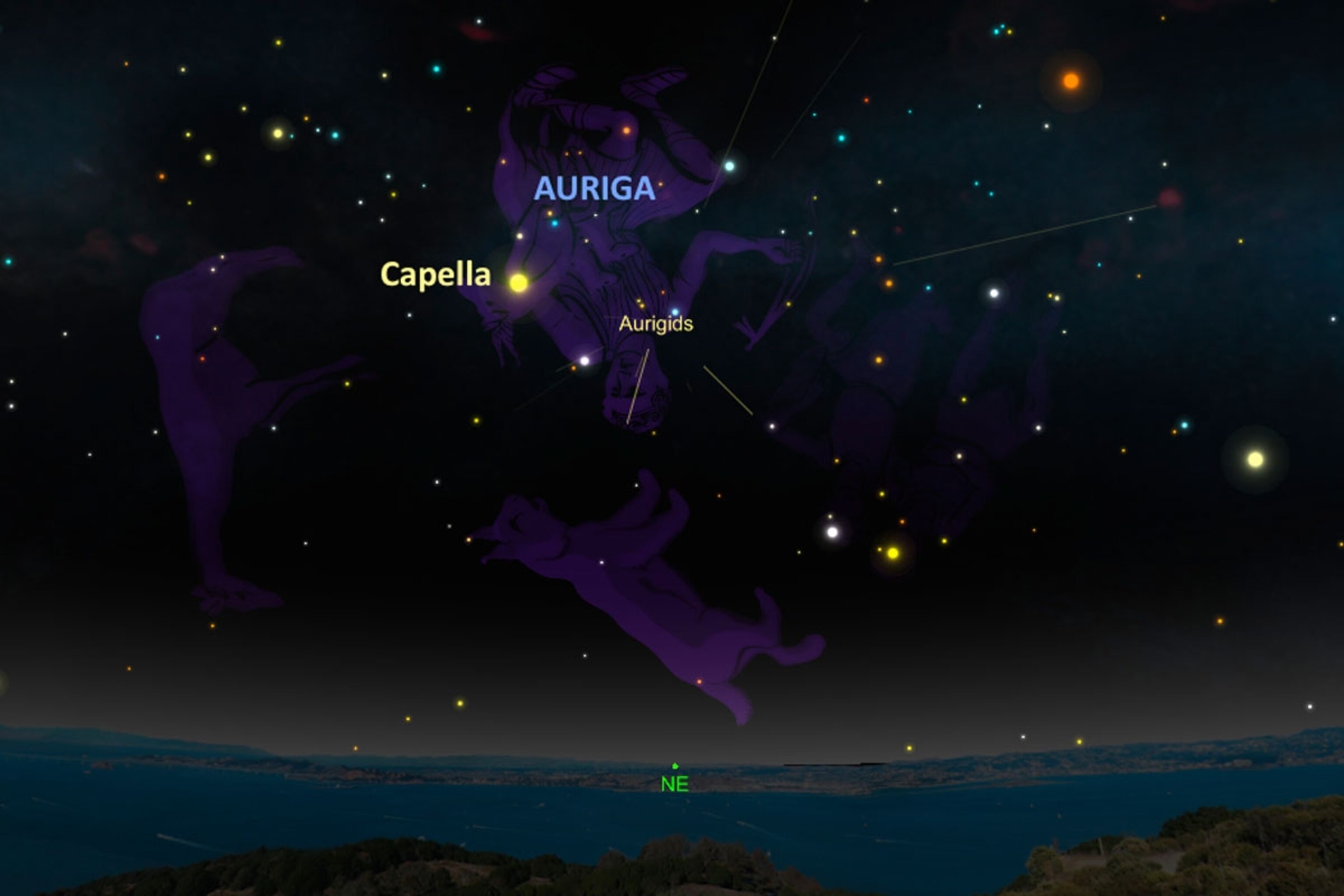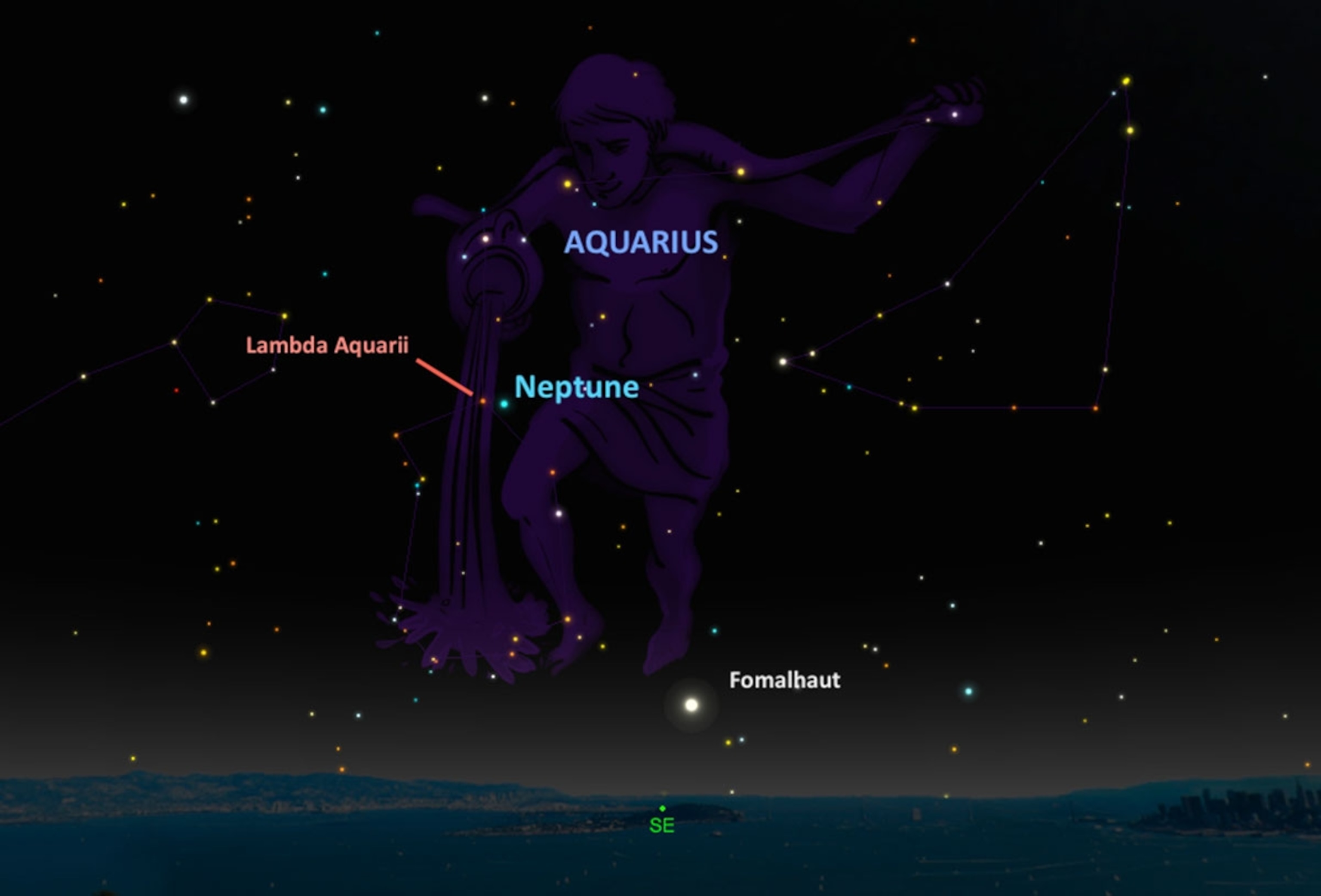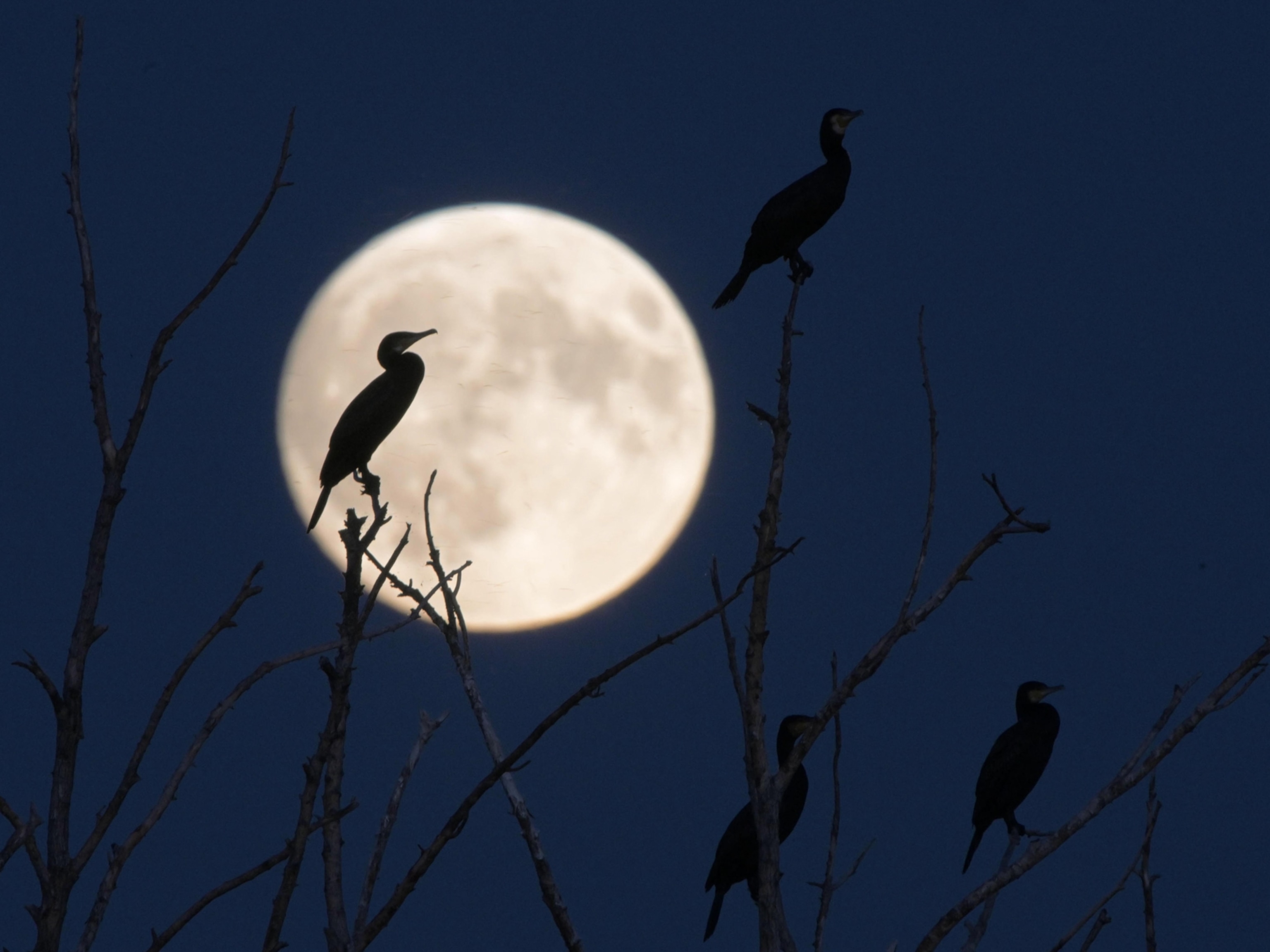
This Week’s Night Sky: See an Eerie Pyramid of Light
Also this week, watch meteors fall and gear up for a “ring of fire” eclipse.
Aurigid Meteors. The Aurigid meteor shower is set to peak before dawn on August 31. This annual meteor shower produces no more than 10 to 50 shooting stars an hour, on average, but on rare occasions it can flare up and generate dozens an hour. For instance, observation records show that as many as 130 meteors an hour fell during the peak in 2007.

As their name implies, the Aurigids appear to radiate from the constellation Auriga, the charioteer, which rises after local midnight this time of year. And with a moonless night on August 31, sky conditions should be ideal for meteor viewing.
African Eclipse. On September 1, an annular solar eclipse will cut across the central and southern parts of Africa. The narrow path of the full eclipse will race across Gabon toward Mozambique, and then cross over the island of Madagascar.
During the eclipse’s peak, the moon will appear to fit snuggly within the sun’s disk, allowing only a ring of sunshine to be visible. Solar glasses are a must to watch this event safely. Stay tuned for a detailed viewer’s guide later this week.

Prime Time Neptune. Late night on September 2, the eighth planet in our solar system reaches opposition. On this day, Neptune is exactly opposite from the sun in our skies, which means that this icy blue giant is at its brightest for sky-watchers, rising in the east just as the sun sets in the west. By 1 a.m. local time, it will be at its highest point in the southern sky.
Over the next few weeks, Neptune will be some 2.7 billion miles (4.3 billion kilometers) away from Earth. At that distance, sunlight reflected off its icy cloud tops takes nearly four hours to reach us, and the giant world is reduced to a pinprick of light that is invisible to the naked eye. Still, Neptune shines at magnitude 7.8, which means it is an easy target for binoculars.

Worlds Align. Within half an hour after sunset on September 3, look for a stunning lineup of the moon, Venus, and Jupiter.
All three celestial objects will span less than one degree across the sky, or slightly more than the width of your clenched fist held at arm’s length. The moon will be only a very thin crescent, so the sky event will be particularly eye-catching and will make for a great photo opportunity.
Zodiacal Lights. Starting on September 4, the next two weeks mark the best chance for Northern Hemisphere observers to catch the elusive glow of the zodiacal lights. This ethereal sight is caused by sunlight reflecting off countless dust particles scattered along the plane of the solar system, in between the planets.
Head far from city lights and into the dark countryside, then look for a pyramid-shaped glow fainter than the Milky Way rising above the eastern horizon before sunrise. A nearly moonless sky in the predawn hours should help with viewing conditions.
Clear skies!
Andrew Fazekas, the Night Sky Guy, is the author of Star Trek: The Official Guide to Our Universe. Follow him on Twitter, Facebook, and his website.





